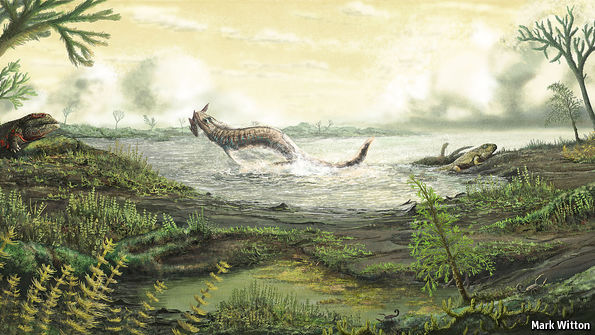New fossils illuminate the route that led ultimately to human beings

ONE of the most important steps on the journey to Homo sapiens was that made by the first fish to crawl onto dry land. It was both a metaphorical and a literal step, but knowing exactly when it happened is tricky. It depends, for one thing, on the definition of “dry land”. Scrambling over the mud from one pool to another, assisted by fins that had evolved to walk along the seabed in the way modern coelacanths do, was probably going on by 385m years ago.
By 375m years ago, the descendants of these first-footers had evolved four limbs clearly recognisable as legs. They were no longer fish, but “tetrapods”. Their legs, though, could have as many as eight digits each, and do not look capable of supporting an animal properly when it was out of the water. Some might thus argue that even by this stage, the step onto dry land had not been truly made.
All of these events occurred during a period called the Devonian when, though the oceans teamed with organisms no less varied than today’s, life on the continents was just getting going. Vascular plants (those bigger than mosses and liverworts) had evolved only…Continue reading
Source: Economist




